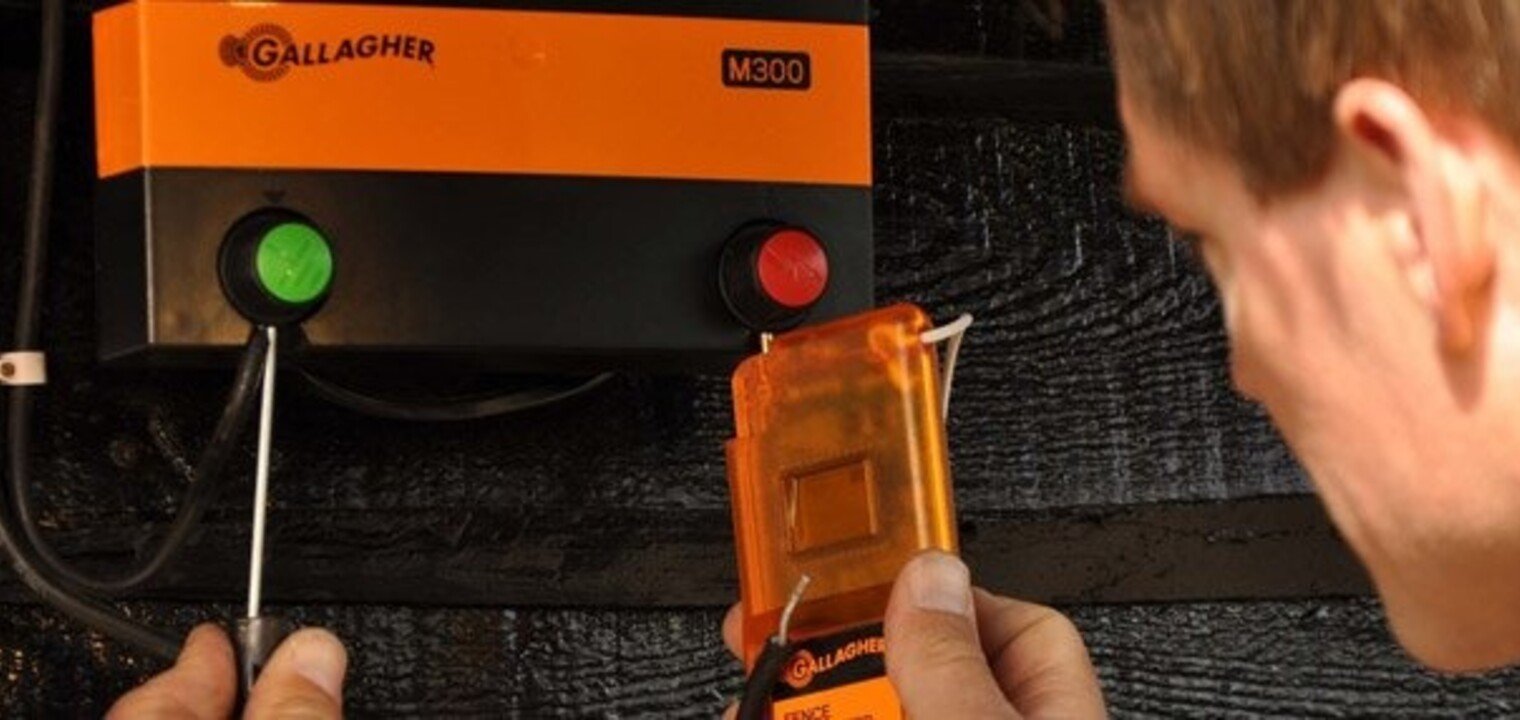If you have an unidentified fault: Complete these checks in the order displayed.
- Check the Power Supply
- Check the Energiser Output
- Check the Fence Installation
Check the Power Supply
Unplug the energiser or disconnect from the battery before checking the power source.
An energiser that operates on 230 volts AC must have a 220 to 240 volt AC supply.
- A 12 volt battery should read a minimum of 12 volts.
- A 8.4 volt battery should read a minimum of 7.2 volts.
- A 6 volt battery should read a minimum of 6 volts.
For best results use a leisure type battery rated at 70 amp/hour or more.
Check the Energiser Output
Disconnect the Fence Wire from the energisers terminal. Do not remove the Earth Wire.
Use a voltmeter, or another fence tester that is designed to test electric fence energisers, to measure the voltage across the Fence and Earth terminals. Please Note: An ordinary volt meter will not measure the very high voltage, short pulse and may be damaged if connected across the energiser's output.
If a volt meter is not available, then a quick test can be made with a short piece of insulated lead out cable or a screwdriver with an insulated handle.
Using the screwdriver or lead out cable, draw an arc between the live terminal and earth terminal. This should be between 1mm and 3mm. This is obviously not an accurate method, but will give you an indication that the energiser is working.
If there is no arc or low voltage then the energiser should be returned to Hotline for repair or you could replace the circuit board. If the output is OK check the fence installation.
Check the Fence Installation
- Reconnect the lead out cable to the Fence Terminal on the energiser.
- Disconnect the lead out cable at the Fence and check the voltage.
- If the voltage is OK then the lead out cable is good.
- If the voltage is low then the lead out cable is faulty and must be replaced. Use only double insulated cable rated at 20,000 volts. HT/G Cable, or the copper HT alternative (not as strong, but more conductive).
- Reconnect the lead out cable to the fence and disconnect any fence that runs off the main fence, or split the fence into sections.
- Check the voltage. If the voltage is low then the fault lies on the main fence or first section.
- If the voltage is OK, reconnect the fences or sections checking the voltage as each fence or section is added. The voltage should remain constant or drop slightly until you connect the fence or section causing the problem. Then the voltage will drop dramatically or the fence will be shorted out completely.
- Once the faulty section or fence has been identified, check the fence line looking for shorts. Look carefully at gates, where cables run underground, at corners and where the fence comes close to other fences. Pay close attention to insulators, joins and connections. Listen for tell tale cracking sounds that indicate shorting.
- Vegetation or rust on the fence line is the most common cause of voltage loss. High powered energisers can lose voltage if enough weeds or grass touch the fence, especially when wet.
- Spraying herbicide under the fence line is good management as is strimming regularly for those of you who lean toward 'green' management.
Rust on the fence wire acts like an insulator and will not transfer the shock to the animal.
Important: TESTING YOUR EARTH SYSTEM... 90% of the electric fencing faults reported to us turn out to be related to insufficient earthing. To find out more and learn how to test your earth, please also refer to the section on the Electric Fence Earth Return System in our Guide to Understanding Modern Electric Fencing





